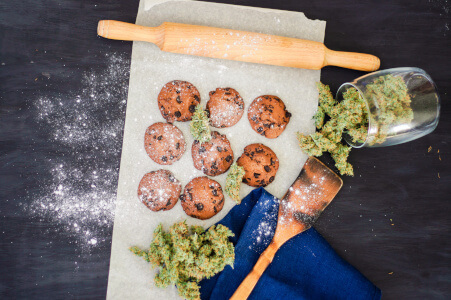
Quality control and consistency isn’t really something that’s typically been a concern with botanical products of the past. However, with botanical and CBD products making their way to the mainstream through both medicinal and recreational channels, manufacturers are now more concerned than ever with maintaining standards and meeting local regulations to make sure that the products they produce are acceptable and traceable. Balances used for weighing out samples are much more important in this process to provide monitoring from seed to sale.
Is My Budtender Also My Pharmacist?
While dosing may seem strange for a substance many see as akin to beer, wine or spirits, it’s worth remembering that we also use a form of dosing for those: a shot of liquor, 5 oz. of wine, etc. But a budtender cannot “prescribe” a dosage of THC for a customer any more than a bartender can prescribe a dosage of alcohol. With edibles, the level of THC is simply an indicator that lets the consumer decide how much to consume to achieve the desired effect.

Dosing
With edibles, THC is absorbed through the gut and the absorbed compounds are processed in the liver (which metabolizes THC into 11-hydroxy-THC, a compound more potent than THC) before the remaining THC and its metabolites circulate through the bloodstream to eventually reach the brain. The process can take anywhere from 45 minutes to three hours. Because it takes so long, the consumer may eat an edible and think it had no effect, then eat more before realizing that they’ve overindulged. Proper dosing – and waiting – is critical to provide a safe experience and that begins with the correct labeling of the dosage. The goal isn’t necessarily to get high: often the goal is pain management, prevention of seizures or more mundane uses such as sleep aid.
Potency
Because there are differences in the way labs measure the potency of an edible versus the potency of the flower or concentrate, it’s not as simple as listing the percentage of cannabinoid strength (i.e., 5 percent THC) the way the alcohol industry labels beer, for example, as a percentage of alcohol by volume (ABV). Instead, the packaging for edibles will often indicate both the milligrams of THC per serving, as well as the total in the entire package: for example, a package of gummy bears may contain 150mg of THC while each gummy bear has 10mg.
Botanicals – both the plant species, as well as individual plants – don’t contain a consistent concentration of THC throughout, so to provide edibles with the correct dosage, manufacturers don’t add the flower into the mix. They add a THC concentrate produced during earlier parts of the production process. During production, manufacturers often use balances such as Adam’s Equinox range, which meets GLP guidelines, to precisely measure ingredients such as concentrate.

By using the concentrate, which can be tested, edibles manufacturers can ensure consistency. Because THC is so heavily regulated, each batch of edibles is tested prior to being released for retail sale to ensure correct labeling and consistent dosages.
Full compliance tests require a minimum of 8g of a sample. Solid samples – such as edibles and the flower – are ground up, combined with a liquid to dilute and extract the substance to be tested, then mixed. The resulting mixture should accurately represent the complete molecular makeup of the original sample. To measure consistent amounts of compounds, active ingredients, excipients or other pharmaceutically inert material, test labs employ balances like Adam’s NTEP-approved Highland series.
Quality control and the assurance that the consumer is aware of accurate THC levels remain critical to ensuring a safe, effective experience with edibles.
Because the legal botanical industry continues to change rapidly and laws vary by state, always check local laws to verify your local regulations and requirements for cannabis products and derivatives. Adam only provides information within its blog to demonstrate how our balances and scales may be used within the industry but does not make any representation or recommendations about the use of CBD or THC. Always consult your doctor if you are considering using botanical products for yourself.

